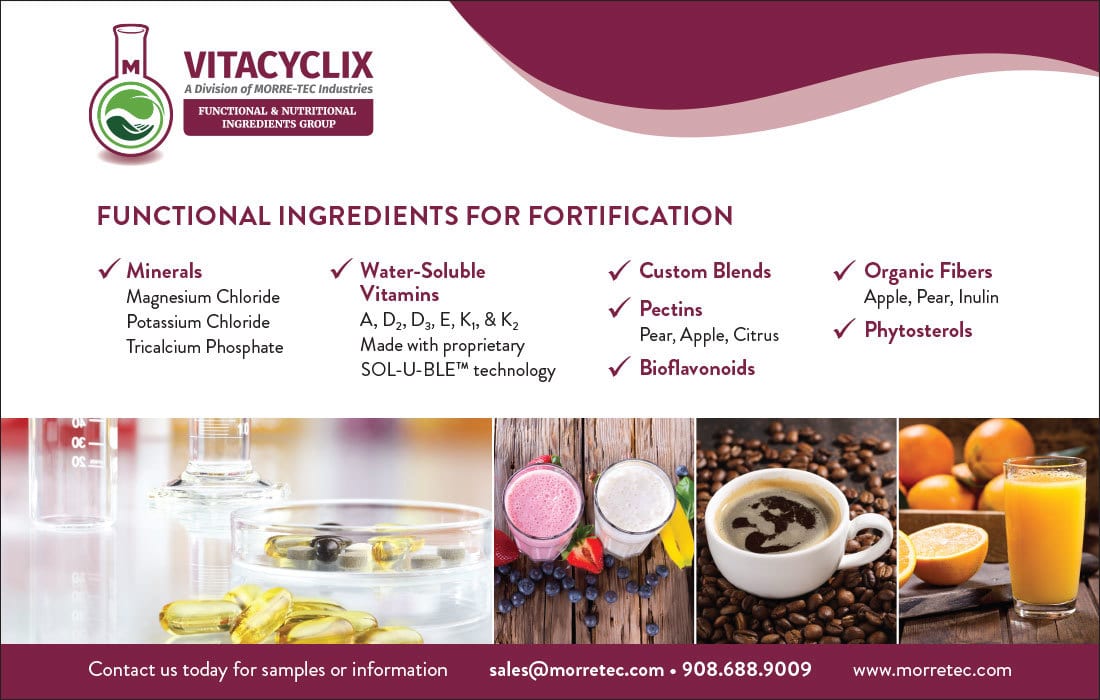CULTURALLY SPEAKING
By K.J. Burrington
Enhance nutrition in cultured dairy products
Vitamins, minerals and prebiotics spell opportunity.

Kimberlee (K.J.) Burrington is director of training, education and technical development for the American Dairy Products Institute.

Kimberlee (K.J.) Burrington is director of training, education and technical development for the American Dairy Products Institute.
Looking at the top 10 list of health positioning for new yogurt products worldwide over the last two years (based on a report from Innova Market Insights), it is a bit surprising that “no-/low-/reduced-fat” tops the list, with “high source of protein” coming in a close second. When we think about how to enhance nutrition in cultured products, most consumers would expect more than these somewhat obvious label claims.
Active health claims that top the list, for the same new product introductions, include “digestive/gut health” and “probiotic.” These two claims make sense for a yogurt category, and most consumers now have been well exposed to the idea of gut health and probiotics. I have also discussed reducing fat and adding protein in past articles, so this time I will cover some other ways to enhance nutrition.
Vitamin and mineral fortification
“Vitamin and mineral fortified” is the No. 3 health-positioning category. Milk, of course, is already full of vitamins (A, D, E and K, plus B1, B2, B6, B12, niacin and pantothenic acid) and minerals (22 of the minerals considered essential to the human diet), but adding more seems to be popular — especially in countries outside of the United States.
In this category are products with “concentrate of milk minerals” and added vitamins D and B6 from Danone in the Netherlands, as well as a drinkable yogurt made in Germany by FrieslandCampina with added vitamins B2, B6, B12, D3, folic acid and calcium lactate.
Concentrate of milk minerals is an ingredient that is made in the United States and overseas. It contains the minerals found in milk — including calcium, phosphorus, magnesium, potassium, zinc, iron and copper — but it is usually derived from cheese whey. It is a great ingredient to boost many minerals at the same time and offers more benefits than just added calcium.
Other claims associated with vitamin and mineral addition show up on products as enhanced energy, enhanced immunity and better bone health.
Prebiotics
Prebiotic labeling is another way to let a consumer know that there is added fiber in the product. Adding fiber is a natural fit for a yogurt because it combines well with the healthy halo of yogurt and also works synergistically with added probiotics by providing food for their growth in the gastrointestinal tract — enhancing immunity.
There are many different types of fiber used in yogurt, with chicory root, also labeled as inulin or fructo-oligosaccharides, being one of the most popular. Other countries also use polydextrose, chia seeds, other oligosaccharides and/or pectin.
In the United States, just 2.5 grams of fiber per serving will give your product a claim of a “good source” of fiber. A typical serving for yogurt or “reference amount customarily consumed” in the United States is 170 grams.
Why not look for these enhancements in the next yogurt you are looking to try?

